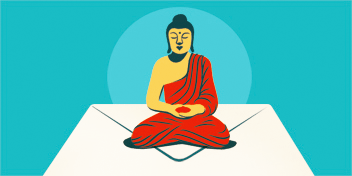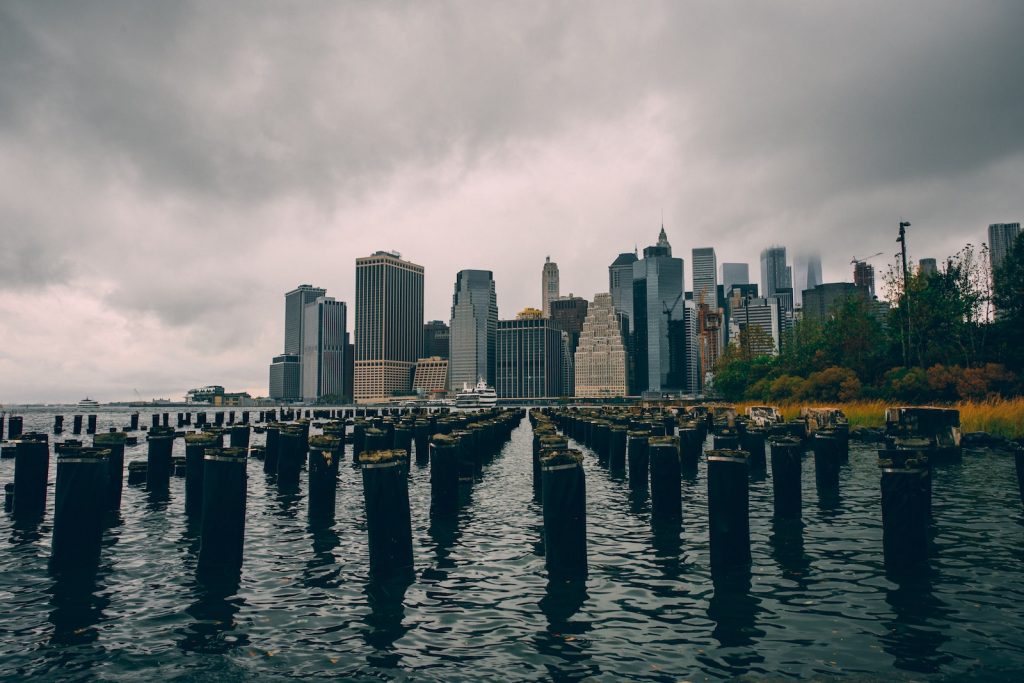The Emperor asked the National Teacher, “After you die, what will you need?”
The National Teacher said, “Build a seamless monument for me.”
The Emperor said, “Please tell me, Master, what would the monument look like?”
The National Teacher was silent for a long time.
Then he asked, “Do you understand?”
The Emperor said, “I don’t understand.”…. (Blue Cliff Record, Case 18)
As COVID-19 swept across the globe last spring, bodies of the dead accumulated by tens of thousands. Where I live in New York City, “mass fatality management” produced multiple temporary morgues and hundreds of refrigerated trailers parked outside dozens of local hospitals. Forensic and mortuary workers, cemeteries, and crematoria were overwhelmed.
What did it mean to be alive, safe, and healthy through such devastation?
The 12th century koan of a “seamless monument” calls me to face the silences of all I don’t understand in this world of ripped seams, shattering inequality, racialized violence, migrant persecution, illness, and death. Perhaps the pandemic that has confounded government leadership at the highest levels is our “(Inter)National Teacher.” Perhaps the seamless monument involves bearing witness with our very lives: mindfulness sustained invisibly through time and space.
As midnight gave way to my birthday in early April 2020, I sat down for an hour of meditation to honor the dead. This meditation has continued as a nightly vigil ever since. Whatever I have experienced during the intervening 450-plus days of our local and global crises, every midnight I have returned to take refuge in this vigil hour.
Long before the current pandemic, I was drawn toward what is called “the Great Matter” of life and death in Zen Buddhism. As a rabbi in my Jewish root tradition, I have worked for decades to reclaim sacred practices of cleansing and dressing the bodies of the dead. These practices mirror our washing and swaddling of bodies at the beginning of life. Most importantly, after death as after birth, bodies are watched over with care—traditionally around the clock—in preparation for return to the earth.
I have been keeping vigil for the dead in hospital rooms and morgues, funeral home parlors and basements, and private homes for over 25 years. But in the spring of 2020, most in-person vigils were not safe or feasible. And in our inability to accompany the dead through the protracted upheavals of the past year, there is no telling how many human bodies have been lost worldwide.
Time-limited vigils for those who can be publicly named—sometimes with highest government honors—remain far more popular than continued mindfulness of the vulnerable unclaimed and unnamed. Yet my Jewish tradition upholds care for the unclaimed dead as a supreme imperative, whether the dead are Jewish or not. It’s an affirmation of our shared humanity.
In Living in the Light of Death: On the Art of Being Truly Alive, Vipassana teacher Larry Rosenberg explains that death awareness is also a core Buddhist practice. He shares his formative experience of keeping an overnight vigil for an anonymous laborer whose body had washed up on the coast of Mexico more than a week after drowning. The vigil had been requested so that the body—already in the process of decay—would be respectfully attended until the dead man’s Catholic priest arrived from another city. Rosenberg’s spiritual guide at the time had arranged for the two of them to share this vigil as “a great incentive…a strong motivation for spiritual practice.”
I have found vigil-keeping to be ambiguous, open-ended, and ungraspable. It is not contained by particular visuals or optics, rituals, or liturgies. It is not defined by personalities that can be publicly recognized, explanations that can be clearly articulated, or events that can be neatly started and ended.
“Do you understand?” asks the koan. Well, I still don’t. Can we not-understand together?
A few weeks into my pandemic vigil, I began to speak and write about it. Gradually others in my various circles began to participate across spiritual traditions, generations, and time zones. Each volunteer takes a different daily/nightly or weekly hour around the clock. We have ranged in age from early thirties to late eighties; in place from Oregon, New Mexico, Texas, Illinois, Ohio, and Florida to the District of Columbia, Pennsylvania, New Jersey, New York, and Massachusetts. Between our respective regular vigil hours, we have come together every couple of months by videoconference to share experiences, questions, and support.
Some of us alternate silence with singing while keeping vigil. Others read or practice various additional forms of prayer or meditation. Our oldest vigil-keeper sings and plays the ukulele, periodically taking time off for self-care—and to grieve the deaths of friends. Undaunted, she has written that “This moving experience satisfies my need to meaningfully participate in one of the most horrendous events of a lifetime.”
“The practice has evolved and I expect it will keep changing,” shared one of our youngest vigil-keepers. “There have been some days when I’ve been exhausted and I’ve allowed myself to rest inside of the vigil…Surrendering to the needs of the body has felt in keeping with a recognition of aging, sickness, and death.”
In late April 2020, the Office of the Chief Medical Examiner brought dozens of freezer trucks to the South Brooklyn Marine Terminal, which lies just beyond a bustling commercial complex in Brooklyn, New York. The number of reported bodies stored at this disaster morgue site has ranged from thousands to hundreds over the past 14 months. The most recent body count is about 200, down from 750 in May. No volunteers are permitted entry to the restricted area, and the “long-term decedent storage” is only now being phased out.
In early June 2020 I made my first pilgrimage by subway to the Brooklyn disaster morgue perimeter. I have returned every 10 to 25 days since then, on behalf of all our vigil-keepers across the country. Standing quietly outside the chain-link fence, walking slowly from one vantage point to another around the end of the pier, I bear witness to the morgue trailers surrounded by abandoned warehouses and dilapidated hangars, cracked asphalt and roaring motors.
During the initial days of heightened public attention, dark canvas covered most of the perimeter fence. In the aftermath of subsequent storms, as media focus turned elsewhere, most of the canvas hung torn at the seams. When the wind was up, the flapping sections could still obscure my view of the trucks, like a struggle with denial.
As I’ve remained present and grown intimate with the area over time, I’ve also borne witness to the irrepressible forces of nature that move through that wounded space: bull thistles, ivy, goldenrod, evening primrose, milkweed, asters, wild strawberry; rain and snow. Watchful pigeons perch on hangar ledges. The site is also visited by geese, stray cats, and occasional dragonflies.
At one angle I can glimpse the Statue of Liberty out in the harbor beyond, her torch raised over the morgue trucks even during the hours that remain uncovered by our human vigil. The invisible “seamless monument” touches monuments with more familiar seams.
During a visit last summer, a bus driver at the end of his route called to me and shared his understanding of what was happening inside the fence. It was so sad, he said. I thanked him for being there as an essential worker, and he replied, “You think I want to be here?” Two of his co-worker friends had died of the virus—Ernesto and Miguel. There were no opportunities to say goodbye, no ways to offer direct condolences to the surviving family members. It was so sad, he repeated.
Sitting at home in nightly vigil, I try to be present for Ernesto and Miguel and the many others who can be named. But my primary concern is for the anonymous bodies in trucks—now across the U.S.—as well as the bodies lost worldwide to poverty and corruption, ceaseless wars, and migrant escape routes. It is far too easy to forget these connections as headlines are redirected.
Vietnamese Zen master Thich Nhat Hanh has recommended that we observe every birthday or anniversary as a “continuation day,” with mindfulness of all our connections through space and time. The one-year anniversary of our vigil—my personal “continuation day”—has now come and gone. Our nation stumbles forward, grasping for daily life as we previously thought we knew it. The Medical Examiner’s office is proceeding with arrangements for transfer of more bodies to Hart Island, New York City’s municipal burial ground off the coast of the Bronx.
Yet the Great Matter itself has not changed—and will accompany us as we move on.
“Do you understand?” Neither do I. I just keep returning every night to sit and bear witness. I struggle with all the challenges that practitioners inevitably face: challenges that strain at the seams of our cushions and benches and notions of separate selves.
After we die, what will we need? What will our seamless monument look like?
Thank you for subscribing to Tricycle! As a nonprofit, we depend on readers like you to keep Buddhist teachings and practices widely available.

